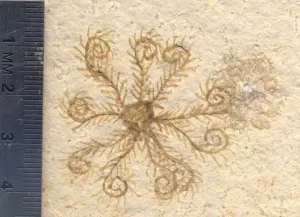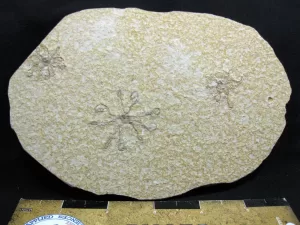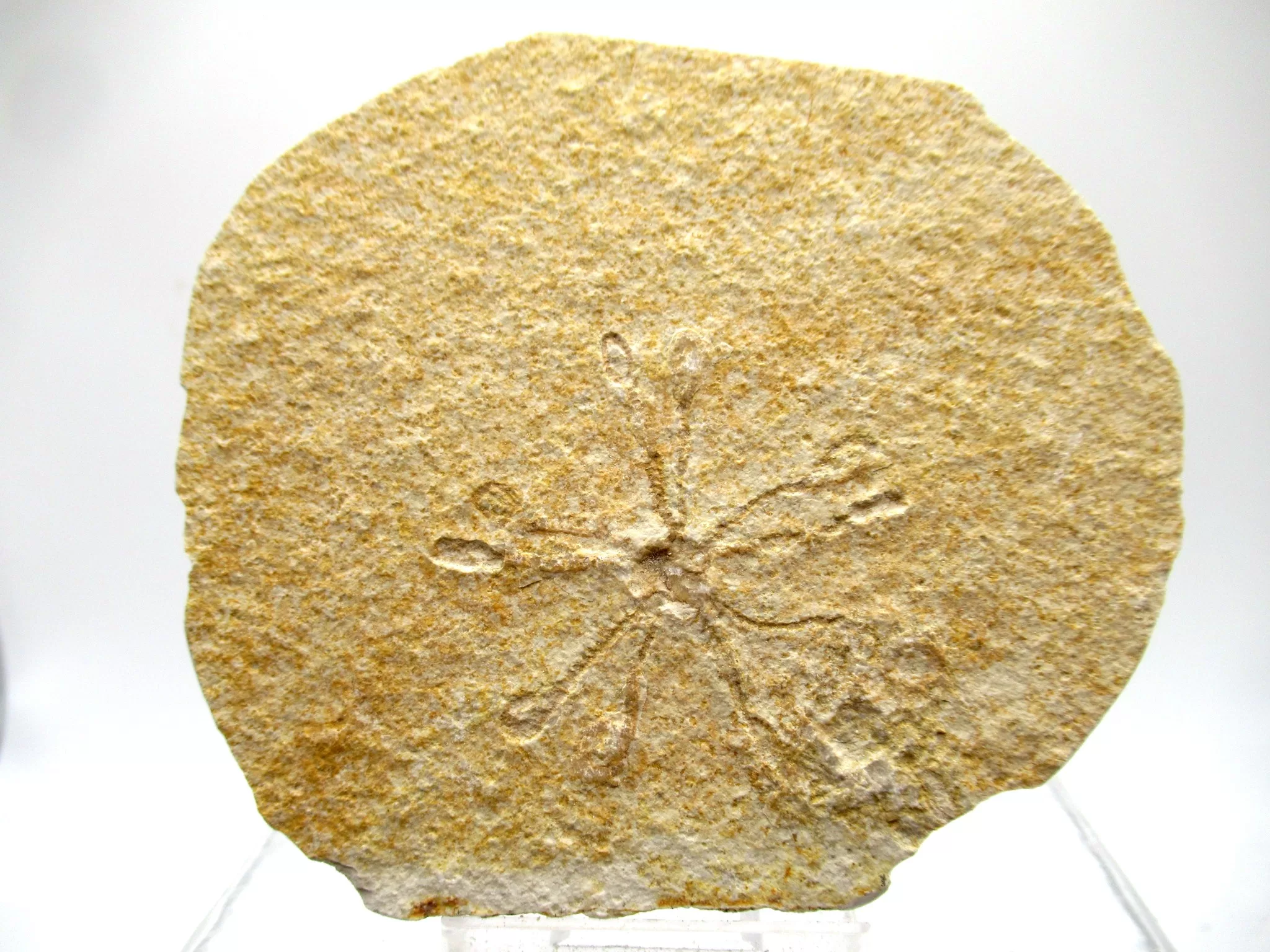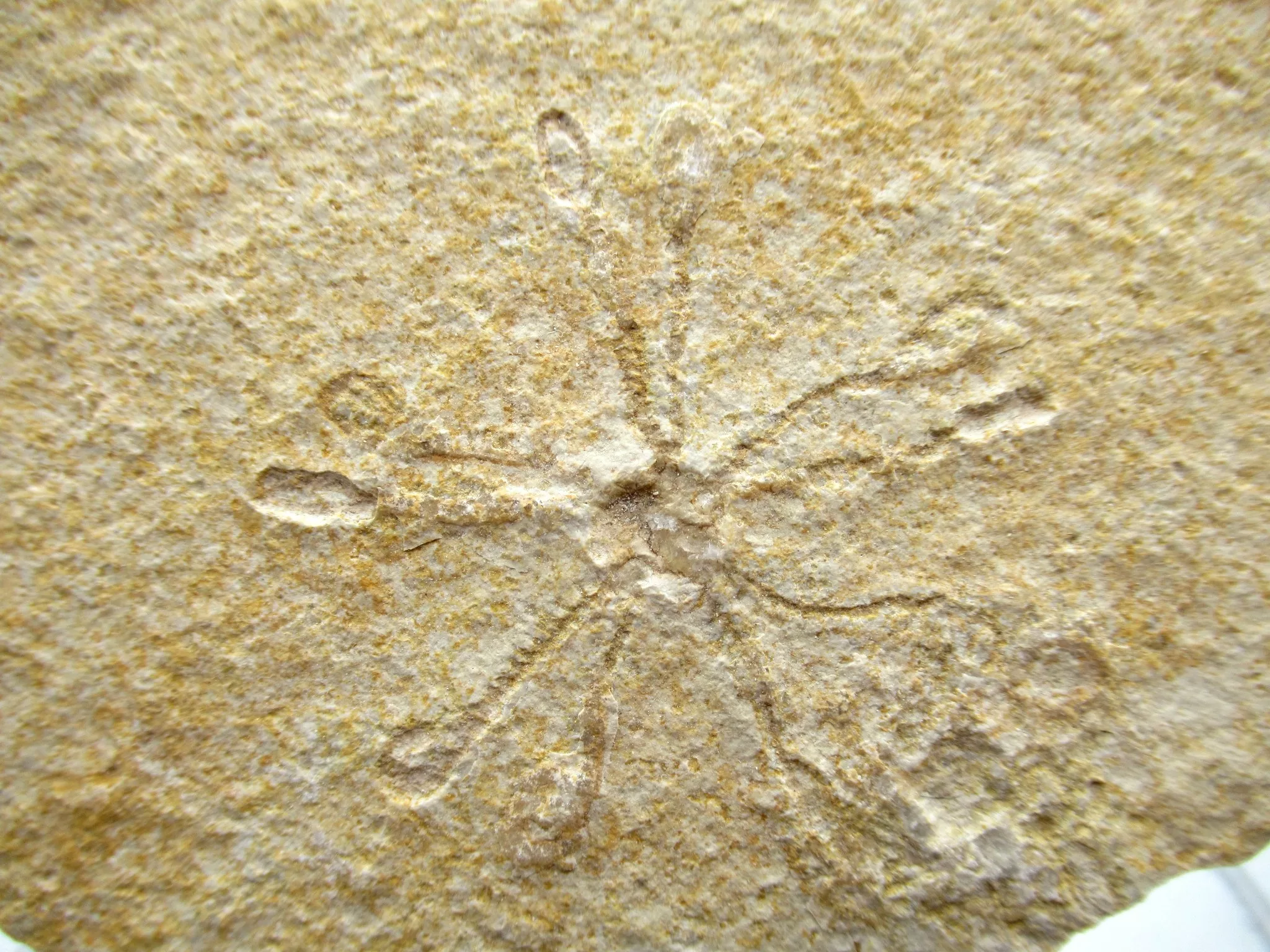Description
- Solnhofen Floating Crinoid
- Saccocoma pectinata
- Jurassic Age
- Solnhofen Limestone
- Near Hienheim, Germany
- This very unusual floating crinoid is nicely displayed on it’s natural bed of matrix. The overall size of the matrix is approx. 3.42″ x3.80 ” at the widest points. Our specimens are NATURAL, as found. Many specimens can be found for sale that have been “tinted” to highlight the details which can be a bit pale when coming out of the quarry. Others have been outright PAINTED to add details that were never there! This specimen has had NO TINT or PAINT applied.
-

An example of a specimen that has been tinted and painted

This specimen has been left NATURAL without Contrast
Solnhofen Saccocoma Floating Crinoid
WHAT IS A SACCOCOMA?
A Saccocoma is an extinct genus of crinoids that lived from the Late Jurassic to the Early Cretaceous in Europe and North America. It contains at least two species. It was a pelagic crinoid. The term pelagic is used for passively drifting (planktonic and pseudoplanktonic). It is also used for actively swimming (nektonic) forms of crinoids. Pelagic crinoids are not known today, so their mode of life and food collecting habits must be deduced from evidence based on morphology, occurrence, and taphonomy of the fossils.
WHAT IS SOLNHOFEN LIMESTONE?
Solnhofen Plattenkalk, or Solnhofen limestone, is a Jurassic Konservat-Lagerstätte. This Lagerstatte preserves a rare assemblage of fossilized organisms, including highly detailed imprints of soft bodied organisms such as sea jellies.
The most familiar fossils of the Solnhofen Plattenkalk include the early feathered theropod dinosaur Archaeopteryx preserved in such detail that they are among the most famous and most beautiful fossils in the world.
WHAT IS FOUND IN THE SOLNHOFEN LIMESTONE?
The Solnhofen beds lie in the German state of Bavaria (Bayern), halfway between Nuremberg (Nürnberg) and Munich (München). The beds were originally quarried as a source of Lithographic limestone.
During the Late Jurassic, this area was an archipelago at the edge of the Tethys Sea.
This included placid lagoons that had limited access to the open sea and where salinity rose high enough that the resulting brine could not support life.






